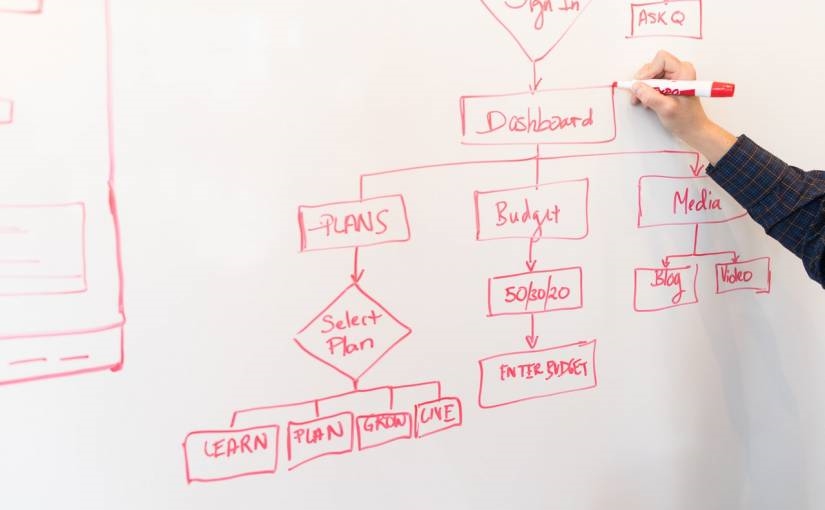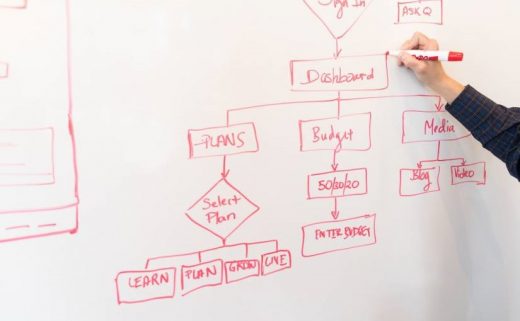7 Ways to Use Concept Mapping for Business Success
7 Ways to Use Concept Mapping for Business Success

Many of us struggle to memorize things we see, read or learn every day. Recollecting even the points discussed in a team meeting or a brown bag session a few days ago can be challenging for most people.
Professionals and organizations use various techniques to overcome this challenge. Some try visuals, while some others use auditory inputs. Of all the methods out there, visualization techniques have proved to be among the most effective.
One study notes that about 65 percent of the world’s population are visual learners. Interestingly, 80-90 percent of the information received by the brain comes through the eyes. This leads us to the undeniable fact that visualization is an excellent method for memorization of new concepts.
Visualization tools come in different shapes and sizes. Concept mapping is one of the best methods and acts as an effective tool for any business.
Concept Mapping
A concept map is a visual representation of knowledge and information. It’s a diagram or graphical tool that can visually represent relationships between concepts and ideas, like circles, boxes, charts, and tables.
Coined by Tony Buzan in the 1970s, concept mapping is a powerful method to capture the understanding of a topic. It improves and evaluates thinking and systematically organizes your thoughts. Professionals and organizations use concept mapping tools to connect ideas and themes.
To put it differently, concept maps help us dig into an idea in detail as we visualize the overall information. They make processing, memorizing, and organizing information easier. Space agency NASA once used concept maps in its exploration of the solar system.
Concept mapping is different from mind mapping, another effective tool to organize new knowledge. Many people confuse them. While both tools let users structure their ideas visually, some vital fundamental differences exist between the two.
A key difference is that concept maps are a network of interconnected concepts, whereas mind maps are a free chart for organizing information. Thus, while concept maps are ideal for knowledge and content map analysis, mind maps are useful for idea generation and note-taking.
Concept maps are hard to change if there are more than 20 boxes or circles (called “nodes”). Mind maps, on the other hand, can be easily adjusted even if they are big.

Different Types Of Concept Maps
As mentioned above, concept maps come in different forms. There are four more widely-used types of concept maps: flowcharts, spider maps, system maps, and hierarchy maps.
1. Flowchart
Most of us are already familiar with flowcharts. A flowchart is used when we need to understand a process or make a decision. It shows each step in a process, and often uses arrows to indicate choices to be make or actions to take.
2. Spider map
As the name indicates, this type of concept map looks like a spider web. In this, you begin with your main idea in the middle and then move out to other topics in a circular pattern. These subtopics can further be branched out into smaller subtopics. These kinds of maps are ideal when someone has one concept they want to explore more.
3. Hierarchy map
This kind of map shows how a hierarchical structure is ordered. Think of it from an organizational standpoint, where it lays out the designations and roles and small groups in an organization. People can use this when they want to get to know the elements of a system.
4. System map
Unlike the other three more simple-looking maps, a system map is a bit more complex. It shows the components of an idea and how they’re interrelated. While they often resemble spider webs, they don’t have to flow outward from a center like what you see in a spider map.
7 Uses Of Concept Mapping In A Business
Many businesses use concept maps and have integrated them into their daily processes to streamline their workflow and improve employee productivity. Below are the eight uses of concept maps.
1. For Brainstorming Ideas
The free-flowing nature of the concept mapping tools makes it an effective tool for brainstorming. The structure of the concept map is such that it begins with a central idea and then expands into multiple sub-concepts. Here, there are no restrictions on the number of ideas one can suggest or propose, and all these suggestions can be incorporated into the concept tool.
2. For Better Planning
Businesses can also use concept maps to schedule and plan their meetings more efficiently. This technique enables them to divide different tasks among team members or highlight how each task is connected. In other words, concept maps let a business organize all its information in one place.
3. For Providing A Better Structure To Information
Concept maps are also used to present ideas in a structured fashion as they display the information more accurately. Businesses can use this combination of linking words and the concept map structure to discuss different problems and develop quick solutions.
4. For Combining Different Concepts
Concept maps also let you combine different information through spreadsheets or files. They ensure you get all essential information at your fingertips. This way, you can save a considerable amount of time, which is otherwise spent sifting through loads of information.
5. For Efficient Project Management
Another effective use lies in data and resource management. Concept mapping software comes in handy at the time of project execution; it allows project teams to add different tasks to the plan for a better workflow.
6. For Problem Solving
It also serves as a tool for developing solutions to complex problems that require critical thinking. One can visualize all the problem areas to create practical solutions with no room for any confusion.
7. For Better Showcase Company Structure
As mentioned before, the hierarchical nature of concept maps lets an organization map out employees. From the CEO to other key executives to the data entry operator, it showcases who reports to whom and in which department everyone belongs.
Say Goodbye to Messy Piles of Notes
From the different use-cases explained above, you can see that concept mapping is a powerful technique to organize your thoughts in a logical and systematic way. Many use this mapping to get a clearer picture of the different processes they’ve used or are working on, as well as to find solutions to complex problems.
With concept maps being part of your daily workflow, you can bid adieu to any unreadable mess of notes that’s been part of life for far too long.
Inner Image Credit: provided by the author; thank you!
Top Image Credit; shvets; pexels; thank you!
The post 7 Ways to Use Concept Mapping for Business Success appeared first on ReadWrite.
(62)


